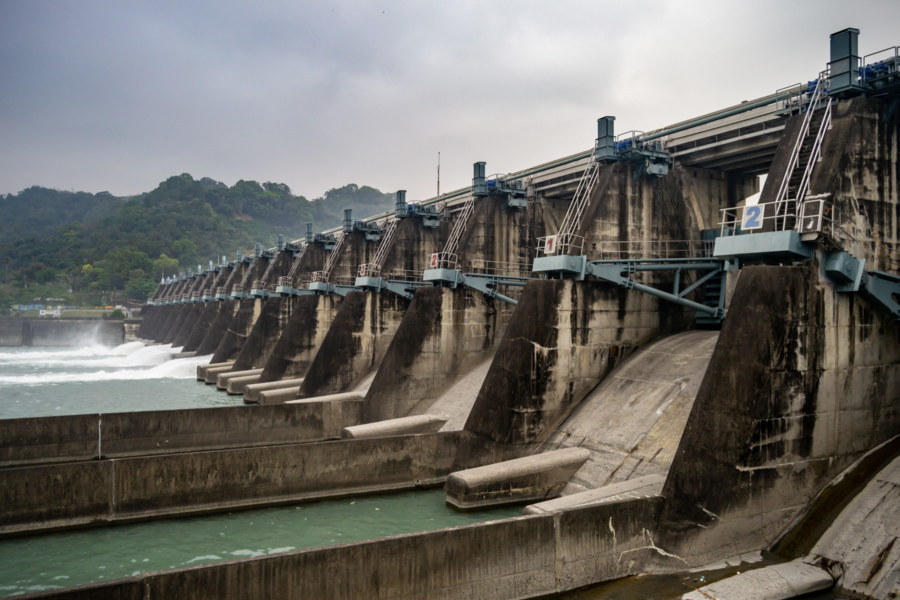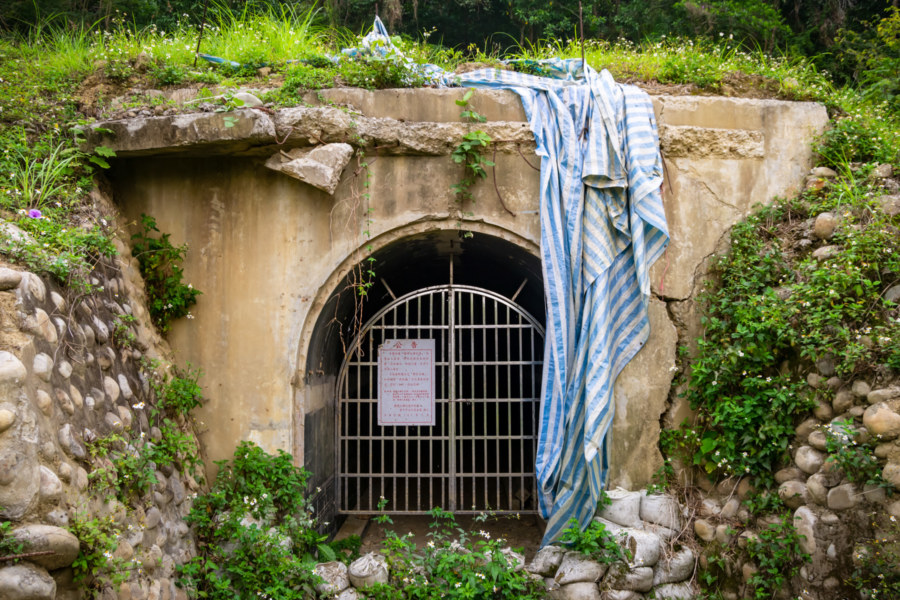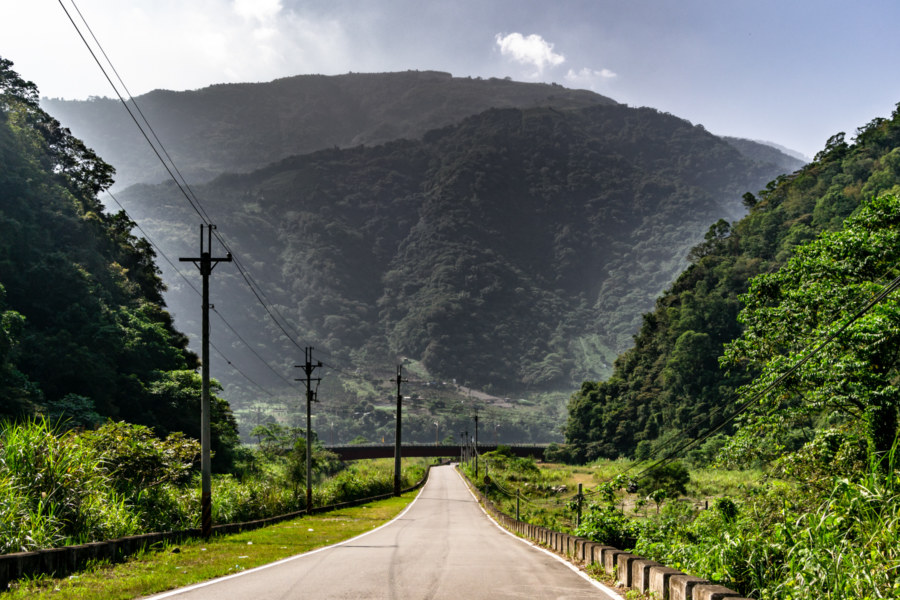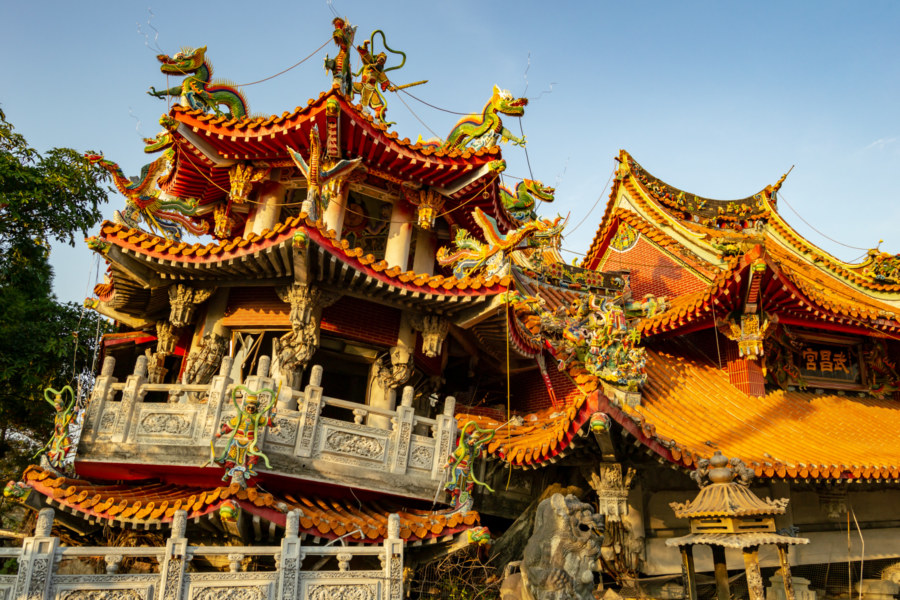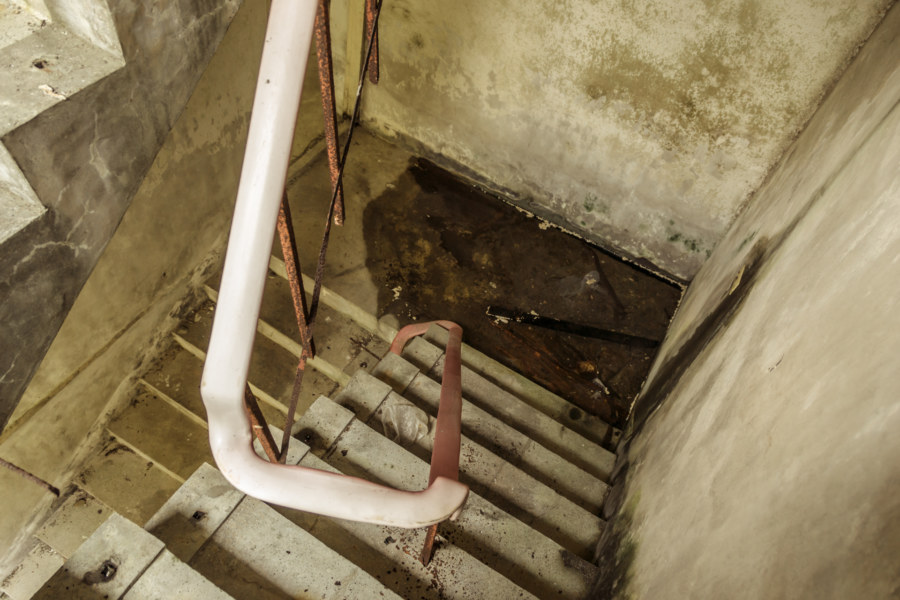Shigang Dam 石岡水壩 is a barrage dam on the lower reaches of the Dàjiǎ River 大甲溪 in Shigang, Taichung, Taiwan. It was constructed between 1974 and 1977, not long after the completion of the Techi Dam 德基水壩, a far more ambitious hydroelectric project further upstream. Intended mainly for flood control and irrigation purposes, it was heavily damaged in the devastating 921 Earthquake of 1999 and later repaired. Despite its diminished capacity, Shigang Dam continues to serve an important function in regional water distribution across Taichung.
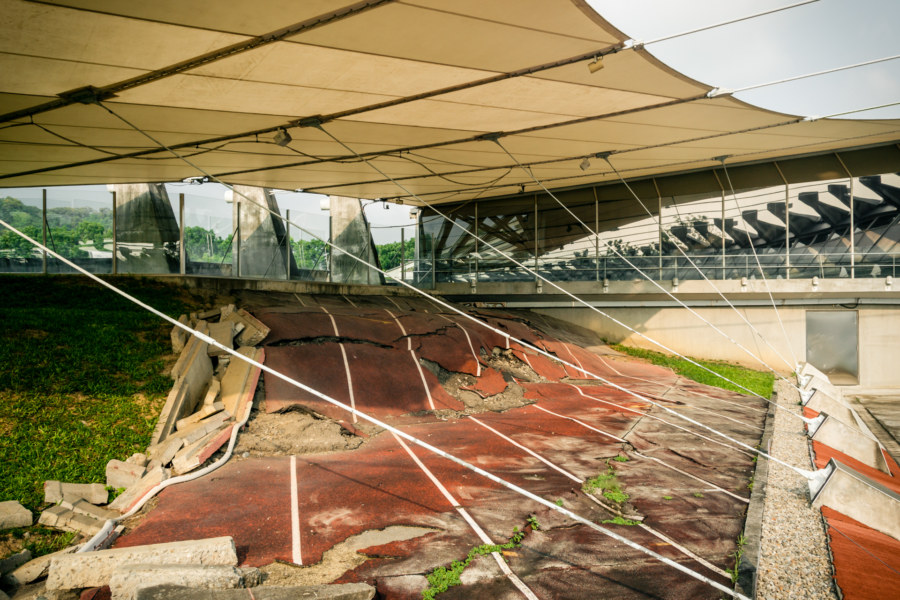
Earthquakes shape the earth. Shake, rattle, and roll.
Adjacent Terms
Beigou Forbidden City Vault 北溝故宮文物典藏山洞
Beigou Forbidden City 北溝故宮 is an obscure historic site hidden in the hills of Wufeng, Taichung. From 1949 to 1965 it was the provisional base of operations for the team of archivists, curators, scholars, and technicians overseeing the subset of the Palace Museum collection sent for safekeeping to Taiwan by the Kuomintang (KMT) in the later stages of the Chinese Civil War. Nowadays this collection is managed and displayed by the National Palace Museum 國立故宮博物院 (or simply Gùgōng 故宮 for short), situated in Taipei, and almost nothing remains of the facilities in Wufeng. The one exception is an underground vault constructed in 1953.
Nantou Road Trip 2015: Sun Moon Lake to Taichung
This post is the final entry in a series documenting several days of riding around Nantou in October 2015. On the last morning of this trip I woke in Puli, close to the geographic center of Taiwan. I only had to return the scooter to the rental shop in Taichung sometime after nightfall so I decided to take a more circuitous route and check out many sights along the way. After a quick breakfast I headed south, briefly stopping by the shores of the majestic Sun Moon Lake (日月潭, covered in the previous entry in this series), and ascended a winding mountain access road leading into Xinyi, one of several majority Taiwanese Indigenous districts in this landlocked county.
Jiji Wuchang Temple 集集武昌宫
Wǔchāng Temple 武昌宮 is one of many remnants of the devastating 921 Earthquake, which ripped through central Taiwan on September 21st, 1999, toppling tens of thousands of buildings and claiming nearly 2,500 lives. Located in the rural township of Jiji in Nantou, less than five kilometers from the epicenter of the magnitude 7 quake, this temple was destroyed mere months after it was completed. Rather than clear the debris, the damaged structure was left more or less as it was the morning after it collapsed, and a new temple with the same name was built in front. Nowadays this ruined temple is a popular roadside attraction and a prime example of disaster tourism in Taiwan.
921 Earthquake Museum 九二一地震教育園區
Deep in the night on September 21st, 1999, the devastating 921 Earthquake ripped through central Taiwan. Thousands were killed, hundreds of buildings collapsed, and entire towns were leveled to the ground, particularly in Nantou and Taichung. Nowadays there are many reminders and memorials to the disaster scattered across the region, among them the 921 Earthquake Museum 九二一地震教育園區 (Chinese version; official site) in Wufeng, which I visited in June 2014.
The Leaning Tower of Su’ao 蘇澳斜塔
There are plenty of crummy old apartment blocks in Taiwan, many of them abandoned and left to the elements. I seldom take more than a cursory look any more since they’re so easy to find—just ride or walk around and look for broken windows and grime. Most of the time there isn’t much to see inside—and anything valuable or interesting has almost always been removed. Even so, I stopped for a moment to investigate this particular building in Su’ao, a township in Yilan, and made an intriguing discovery.
